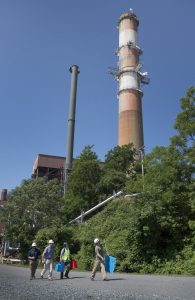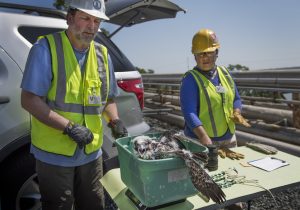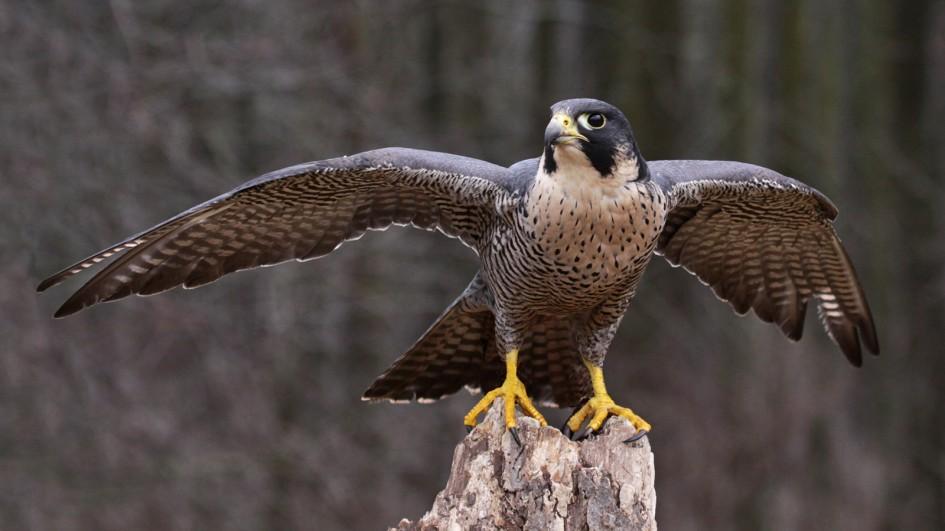Previously placed on the endangered list, peregrine falcons, capable of reaching speeds up to 200 miles per hour, are becoming quite the success story in bird conservation.

Photo by Linda Davidson
Just 50 years back, peregrines were nearly wiped out entirely east of the Mississippi River from widespread pesticide usage. The rare species went from 25 pairs in Virginia to none and from 350 pairs to nearly gone in eastern North America according to Bryan Watts, director of the Center for Conservation Biology at William & Mary and VCU.
According to a report by The Washington Post, Watts has had his hands full with the monitoring and research of a specific pair of peregrines that have made a smokestack their home in Prince William County, VA. The pair has resided in the same smokestack for nine years inside of a nest box placed by researchers. Watts and his counterparts have had a nearly 12 year partnership with Dominion Energy that allows him to conduct research and travel up the smokestack to retrieve the babies in order to tag them.
In his recent ascend to retrieve the two baby females and one baby male, he was able to grab both females while the male was startled and abandoned the nest to test out his wings. The females were successfully banded as there was a two day search for the male. Luckily, a power plant worker found the young male and was able to turn it over to the researcher who then took him to a wildlife center in Shenandoah National Park. He was taken there as an at-risk falcon to be put in a hack box where he will be fed and cared for until he is ready to take off and fly away on his own.
The legs of each of the female peregrine falcon newborns was banded with a metal tag that is placed on their legs as they are examined and weighed. As explained by Watts: Banding the young birds helps to monitor their population, keep track of the number or pairs by area, and the amount of young the pairs reproduce.

Photo by Linda Davidson
From endeavors to keep track of such things, researchers know that from the pair in Virginia, the female came form the Betsy Ross Bridge in NJ and the male was born in Maryland at a power plant. As both birds traveled far before finding the other, they yielded a perfect example of how the breed received its name.
Peregrine means traveling or wandering as the falcons’ history shows evidence of lengthy travels. From the tracking of the chicks of the Virginia pairing, researchers have found the grown up chicks in cities in the northeast like Boston and NYC while others have been found out west and even as far as Columbia and Panama when migrating for the winter. As mature falcons, the peregrines have a nearly four foot wingspan and they catch their prey in mid-air. Their numbers have drastically changed and there are now roughly 1,650 breeding pairs in the U.S. and Canada according to Defenders of Wildlife.
In an effort to put the pieces together of how this resurgence has come to be, Watts explained that a big reason for their growing numbers is the birds’ ability to adapt to man-made structures. This helps explain why the pairing in Virginia is content on a smokestack rather than a tree somewhere.
As you go about your adventures in the Blue Ridge Mountains, keep an eye out for the peregrines because if you blink, you just might miss them.








